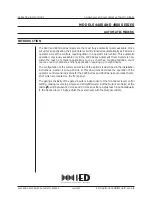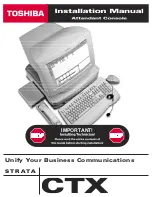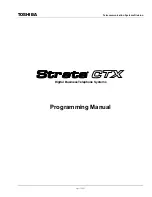
Glossary
287
DME32—Owner’s Manual
Glossary
ADAT interconnect format
—The digital audio interconnect format typically
found on ADAT-compatible digital audio equipment. Eight channels of digital audio
are carried per fiber-optic connection using Toslink connectors.
AES/EBU interconnect format
—The digital audio interconnect format, estab-
lished by the AES (Audio Engineering Society) and EBU (European Broadcasting
Union), for transferring digital audio data between professional digital audio equip-
ment. Two channels of digital audio (left/odd and right/even) are carried per balanced
line.
Bessel
—A type of filter characterized by its virtually linear phase response (i.e., the
amount of phase change is the same for all frequencies within the pass band). Although
it has a more gradual roll off than a Butterworth filter, it will pass a square wave without
causing ringing. See also Butterworth and Linkwitz-Riley.
Butterworth
—Being the most common type of filter, filters are typically always But-
terworth, unless otherwise stated. It has a flat pass band and a -3 dB gain at the cutoff
frequency. See also Bessel and Linkwitz-Riley.
Cable mode
—The DME Manager mode for wiring components.
Compiling
—The process of translating a configuration into information that the
DME32 can understand. Configurations must be compiled before they can be saved or
transferred to the DME32.
Component
—Components form the building blocks in DME32 configurations.
Some components are complete audio processors, such as mixers, compressors, effects,
and crossovers, while others are individual parts, such as faders, switches, pan controls,
and meters. Custom components can be created using User modules.
Configuration
—The arrangement of components and wires that makeup a DME32
audio system. The DME32 can store two configurations: A and B.
DSP (Digital Signal Processor)
—A chip designed specifically for processing large
amounts of data at high speed and in real time, ideal for digital audio processing.
Edit mode
—The DME Manager mode used to build and edit configurations. Also
used to edit and preview scenes offline.
Emergency mode
—The mode in which all DME32 outputs are muted and the
EMERGENCY indicator lights up. One GPI input can be assigned to emergency, and
when that input is triggered, Emergency mode is engaged.
Firmware
—Software that is stored in Read-Only Memory (ROM). The DME32’s sys-
tem software is stored in flash ROM, a special type of memory that can be repro-
grammed.
FS
—Abbreviation for sampling frequency or rate.
GPI (General Purpose Interface)
—The DME32 GPI interface allows remote
interaction with custom-made controllers and other equipment, with 16 GPI inputs
and 16 GPI outputs.
Initial settings
—The settings used when a device is first turned on after leaving the
factory. Also known as the default, or factory settings.
Linkwitz
-Riley
—This filter offers slopes of 12 dB, 24 dB, 48 dB, etc. When the output
signal from its LPF and HPF are combined, the gain over the entire range is flat. Like
the Butterworth filter, it has a flat pass band. The gain at the cutoff frequency is -6 dB.
See also Bessel and Butterworth.










































